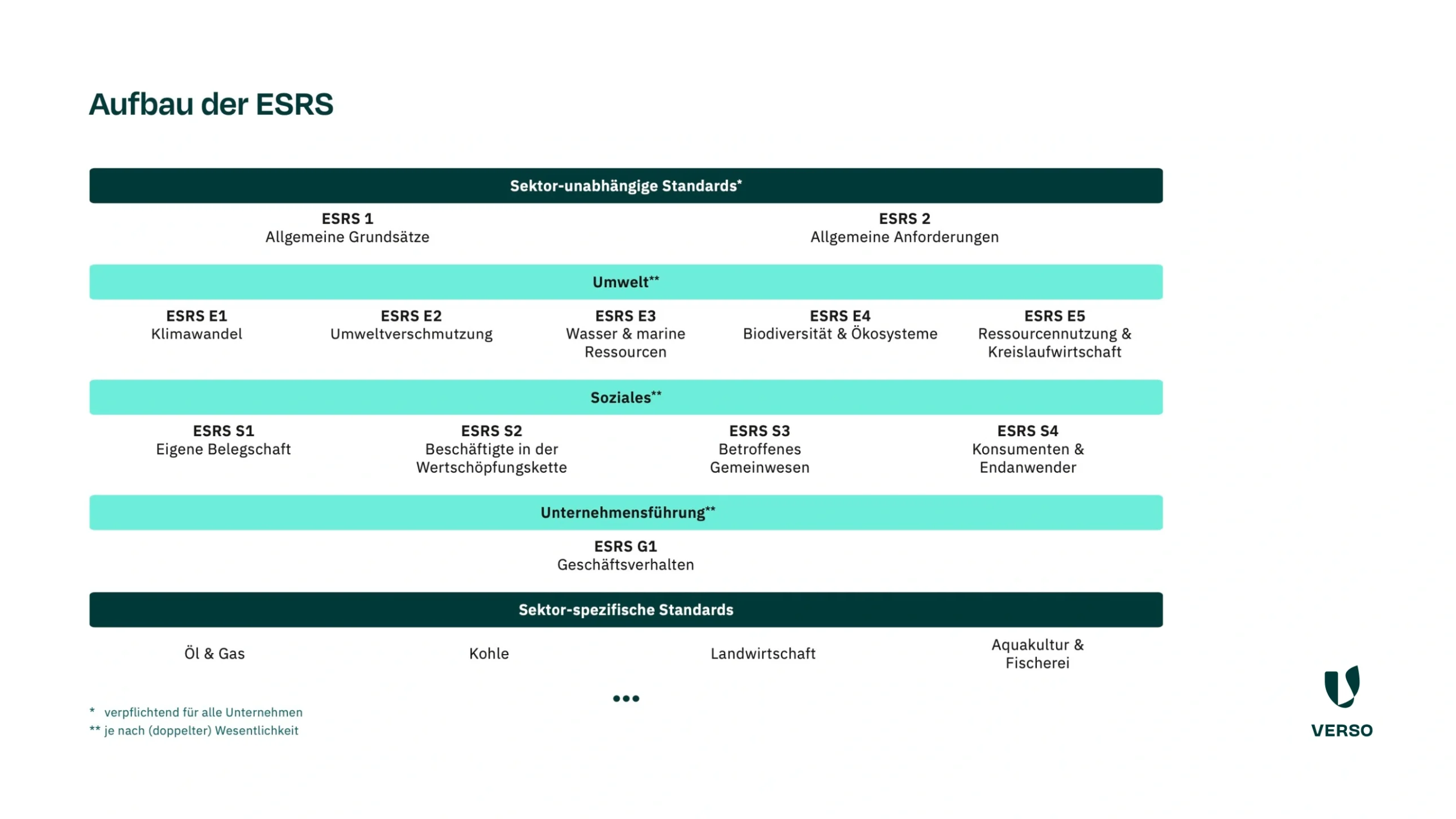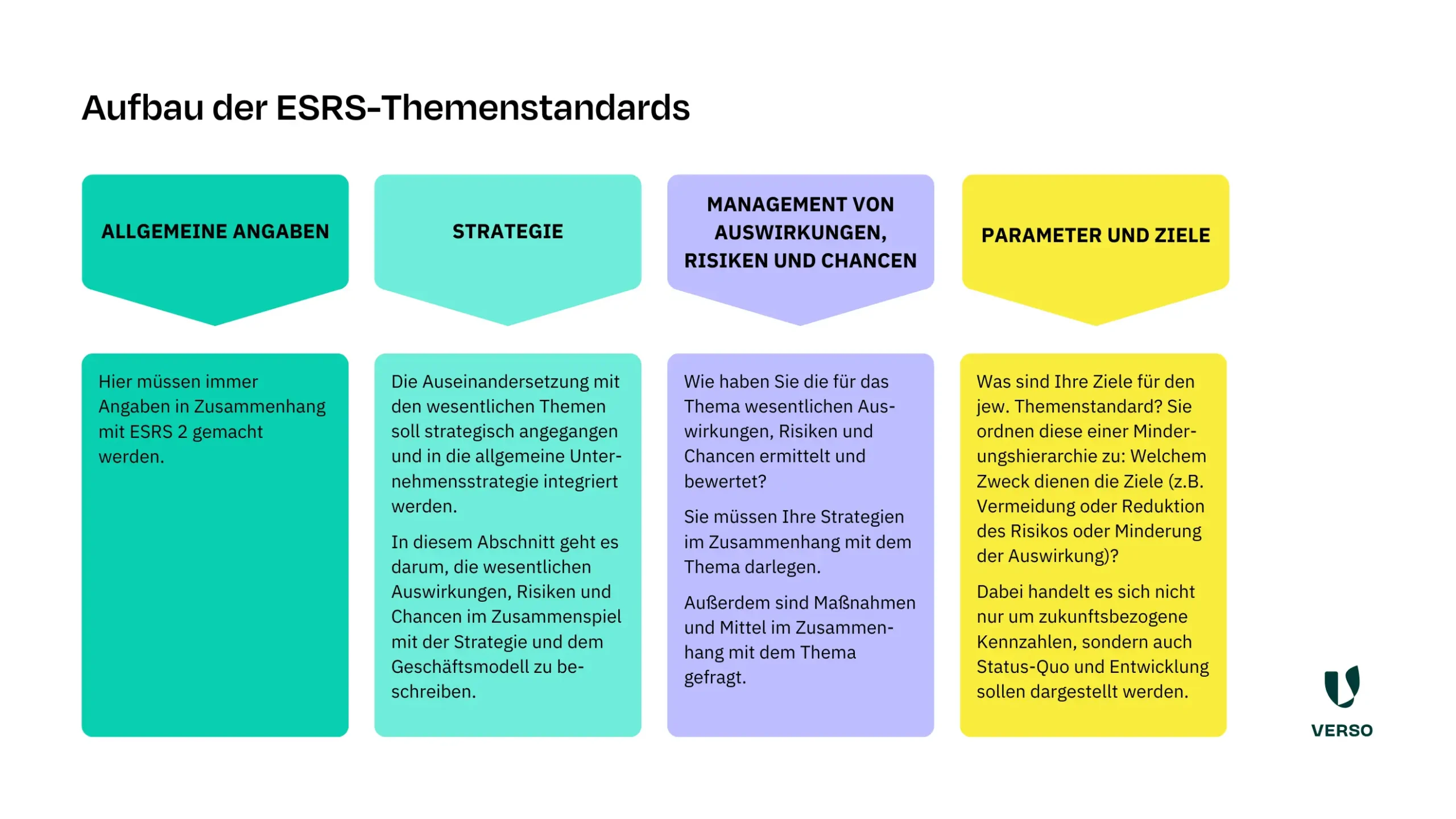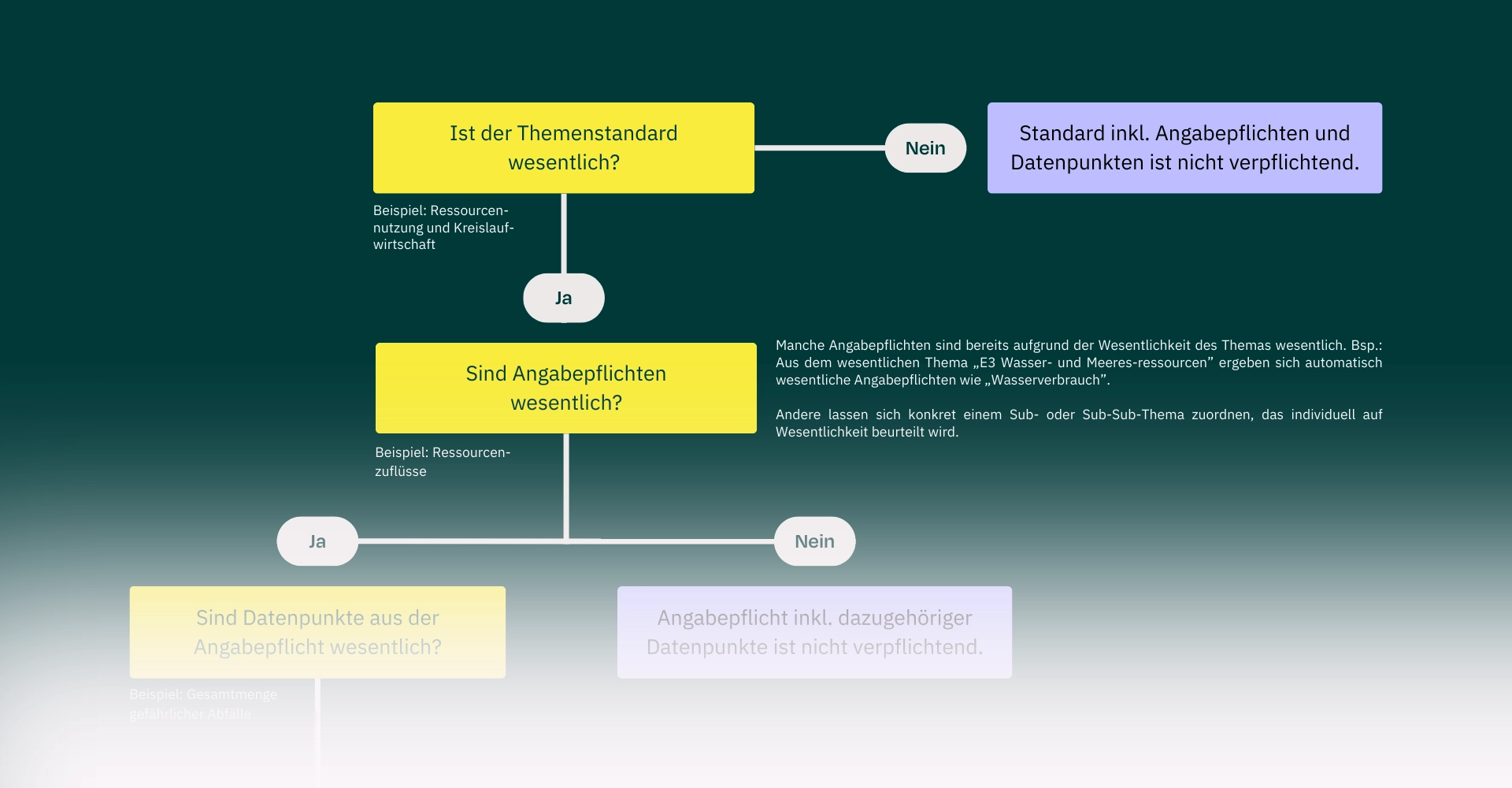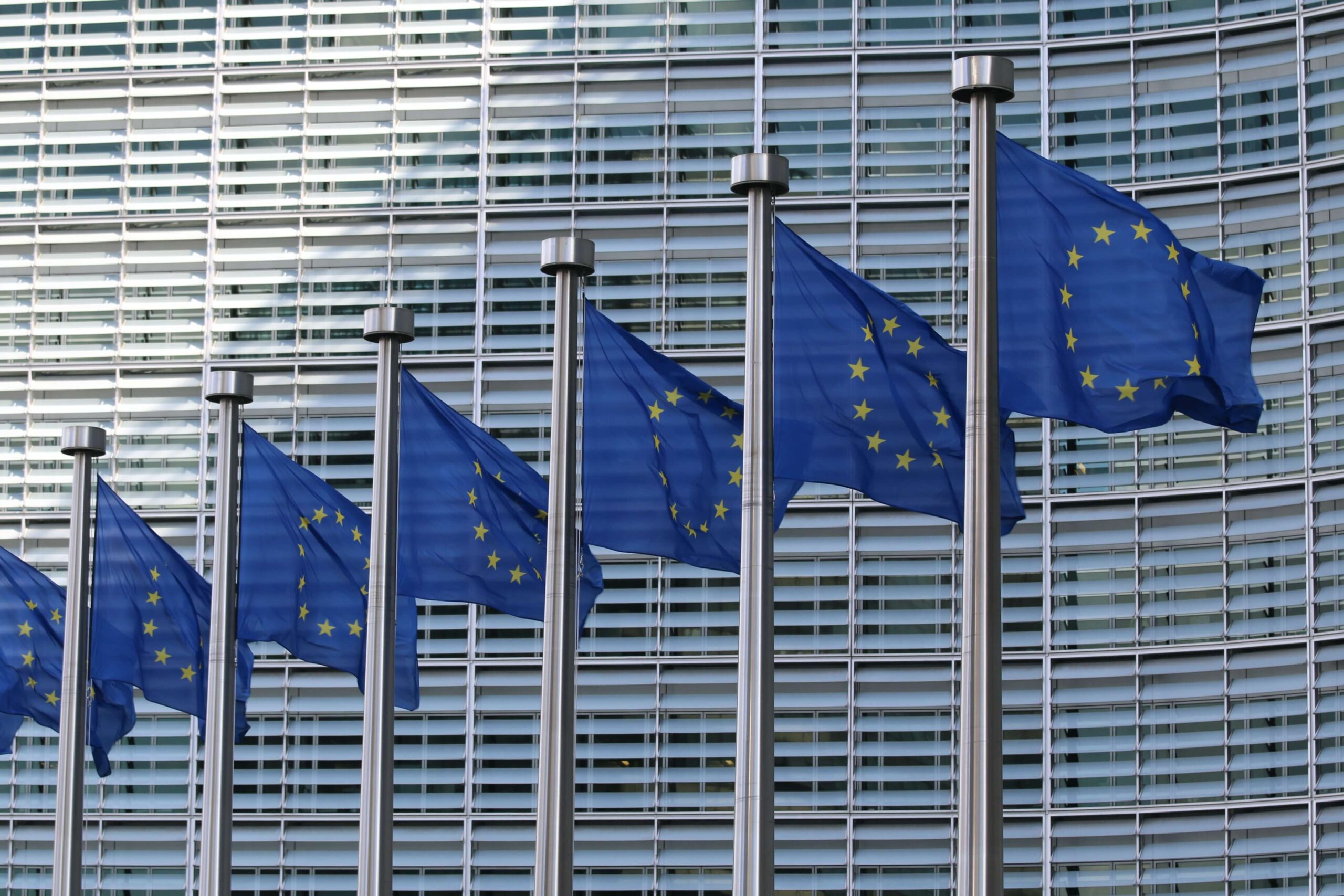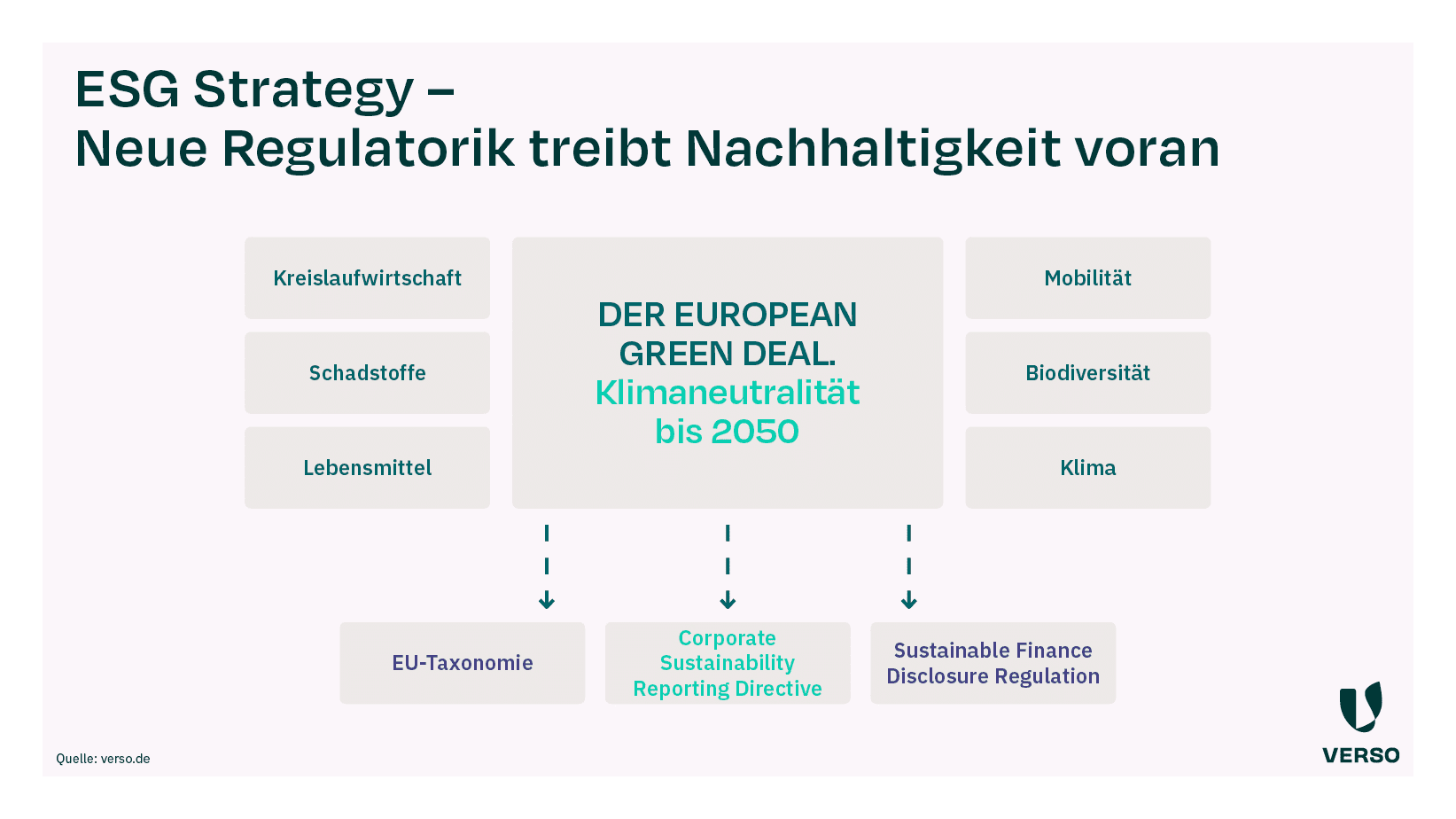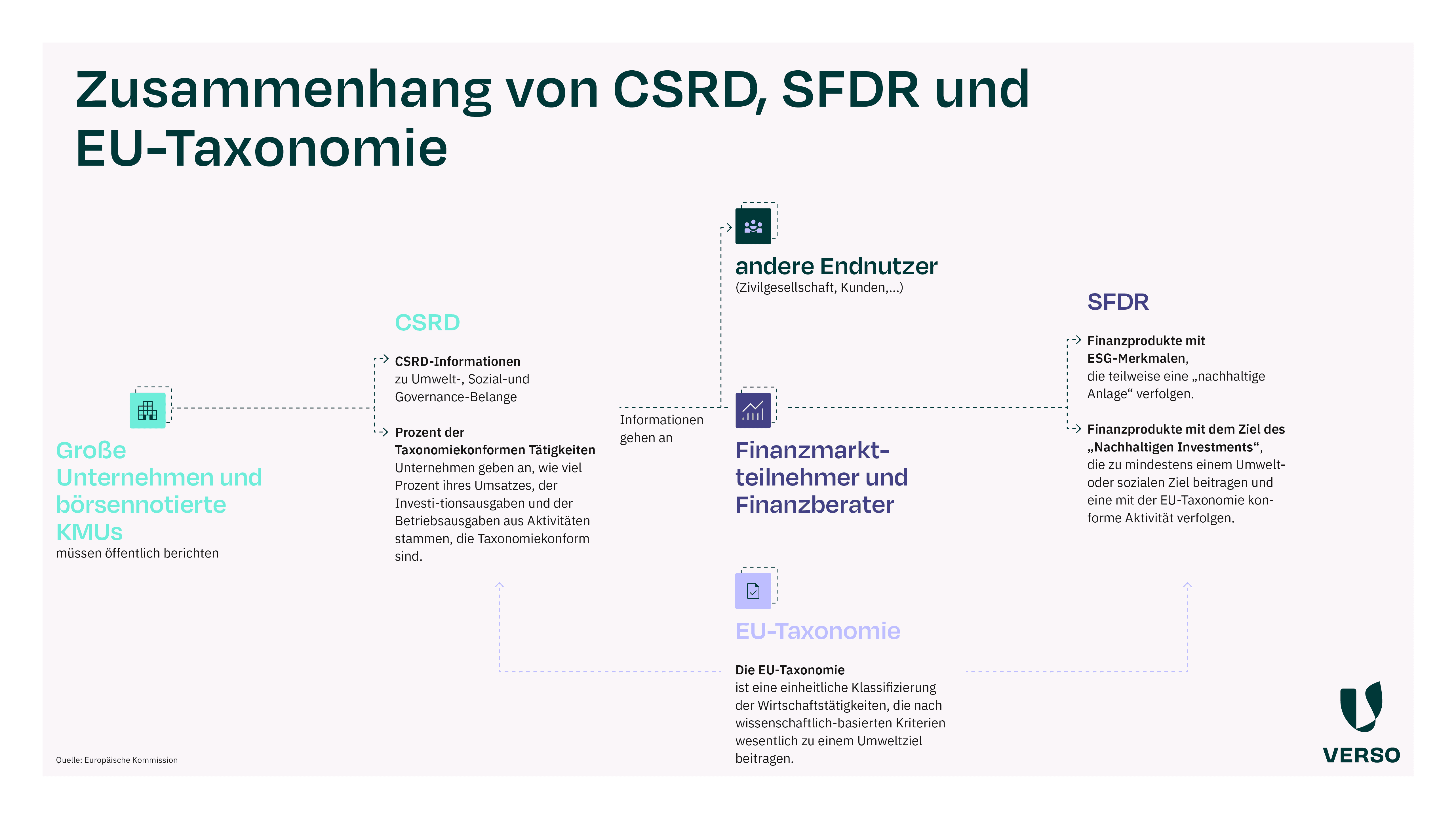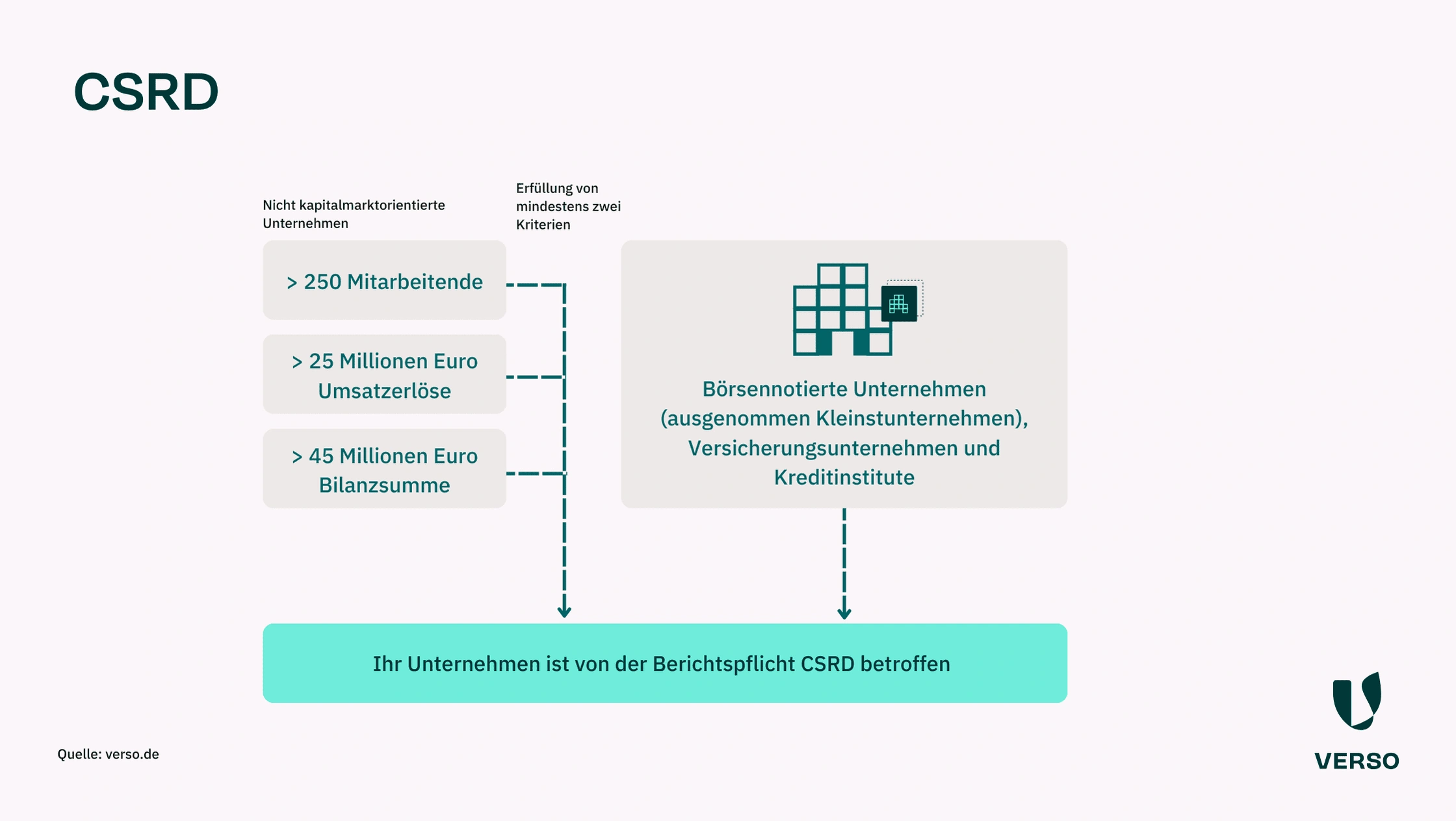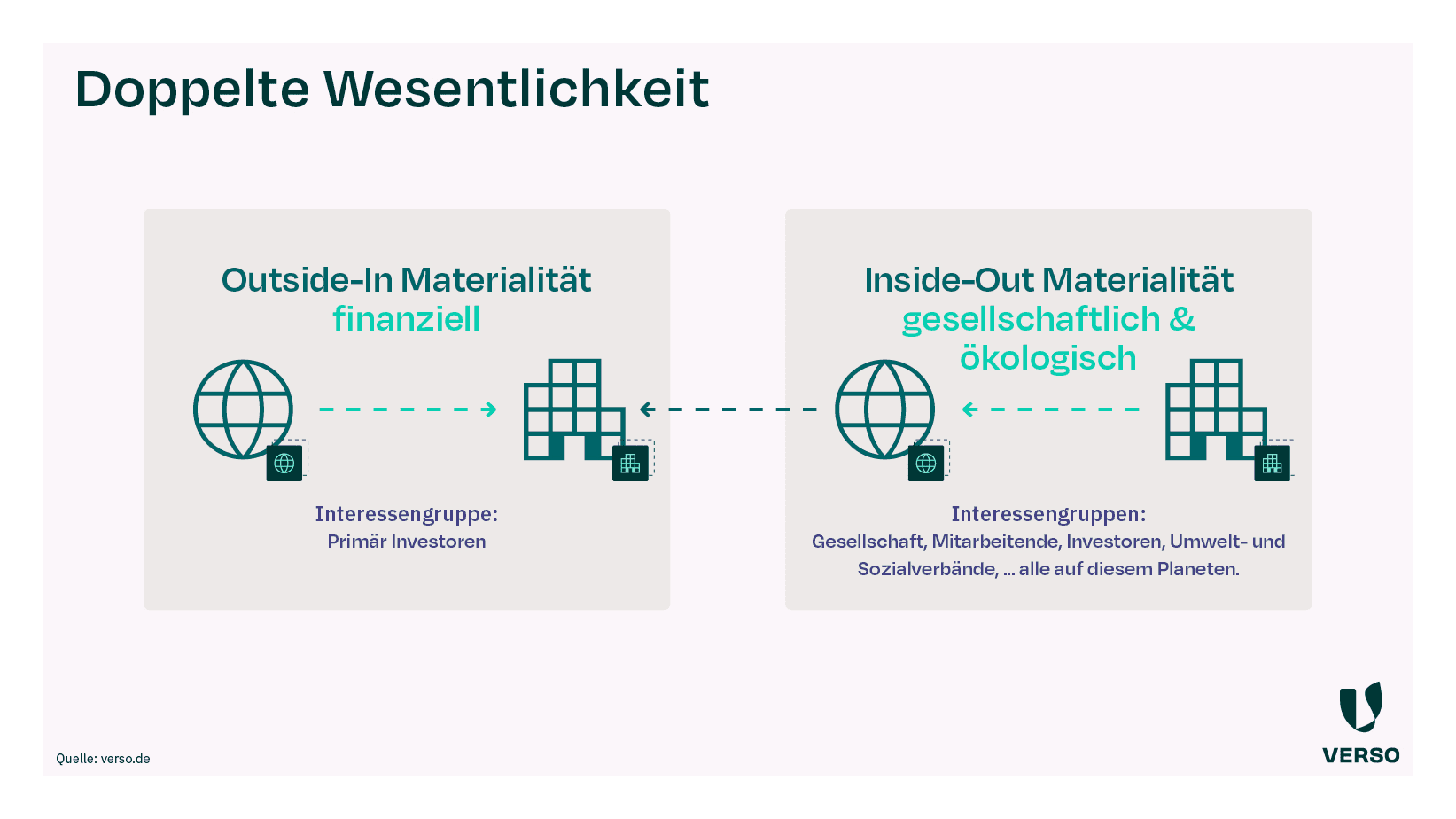
Why the CSRD is more than bureaucracy
Despite the many requirements, working on the CSRD report creates a profound awareness of genuine sustainability. Even if the CSRD is primarily a bureaucratic obligation, it also conceals valuable opportunities for business. Read this article to find out what these are.
The first companies have already published their CSRD report, and many more have yet to do so.
In Germany alone, around 15,000 companies are affected by the new EU directive on sustainability reporting.
And if we look a little further: Across Europe, a total of around 50,000 companies will have to report in accordance with the CSRD in the coming years.
What is the aim of the CSRD?
The CSRD is primarily intended to improve the transparency and comparability of sustainability reports, but also to close gaps in previous reporting obligations.
To understand this, it helps to look back at the past of sustainability reporting.
Sustainability reporting used to be voluntary for companies, was subject to no or only a few rules and often ended up as a kind of marketing brochure.
The first EU directives then put a stop to this.
However, the CSRD now goes one step further.
On the one hand, a whole host of companies are affected by the new reporting obligation, from small and medium-sized enterprises to large corporations.
Across Europe.
And in some cases even beyond the EU.
On the other hand, there are stricter rules: All disclosures must now be verifiable and signed off by auditors. The CSRD also requires significantly more and more in-depth quantitative and qualitative data.
This should make the reports more comparable.
In this way, the EU wants to drive forward the sustainable transformation of the economy.
At the same time, the CSRD is a sensible response to the growing expectations of investors, customers and society as a whole.
Companies are increasingly being held accountable for their sustainability performance – and more and more often, sustainability efforts also form the basis for economic success.
In a nutshell: CSRD makes sustainability transparent and comparable, creating the basis for us to steer our economy towards a more sustainable future in a targeted manner.
“That sounds all well and good,” you may be thinking, “but what’s the point of all the pink clouds if I’m sitting here at my desk and can’t see sustainability for all the data?”
Awareness arises from bureaucracy
PwC recently published a study according to which the majority of the companies surveyed were confident: Yes, we will be ready for our new reporting obligations by the deadline.
The respondents were mainly listed companies with an annual turnover of over one billion.
However, we know from our own experience that small and medium-sized enterprises in particular are groaning in the face of the work involved in preparing and implementing the CSRD.
They tend to have mixed feelings about the CSRD.
“The CSRD is just another useless bureaucracy that will create a burden, stress and work and tie up considerable resources, but ultimately won’t change anything at all.”
This and similar criticism of the new directive is often voiced.
And yes – of course there is a lot of bureaucracy behind the new laws and reporting obligations relating to sustainability.
A lot of data has to be collected, a lot of time is spent on preparation and implementation and a lot of employees are involved.
However, in our work with our customers, we see time and again that anyone who writes sustainability reports and takes an in-depth look at the topic of sustainability also recognizes the potential of CSRD.
More than just a bureaucracy monster: 6 potentials of CSRD for your company
Despite (or perhaps because of!) the many requirements, working on the CSRD report creates a profound awareness of genuine sustainability.
So even if the CSRD is primarily a bureaucratic obligation, it conceals valuable insights and potential.
And let’s take a look at them now.
1. the CSRD promotes a better understanding of one’s own risks and opportunities
Before the actual CSRD report is prepared, the double materiality analysis is carried out.
Here you determine:
- How do sustainability aspects influence your company?
- What impact does my company have on the environment and society?
Background: The ESRS, the CSRD framework, lists over 1,000 possible data points for the report.
In the end, however, only selected data points such as ESRS 2 and those whose associated impacts, risks and opportunities (IROs) you have determined to be material are required to be reported.
On the one hand, the double materiality analysis gives you clarity as to what belongs in your CSRD report.
On the other hand, it also gives you a very helpful picture of how your company relates to the environment and society. You also get a crystal-clear overview of the risks your company could still face – where undiscovered opportunities for the future of your company lie dormant – and how your company is developing.
Find out more in our article “The double materiality analysis in 7 steps”.
2. the CSRD brings economic benefits, supports innovation …
The majority of decision-makers surveyed in a Noerr study assume that ESG will bring about change in the company.
However, the transformation of business models in turn requires comprehensive adjustments to product development, internal processes and management.
This is where the wealth of data you collect and analyze for CSRD provides useful insights.
Where are resources still being wasted without this being noticed?
Which processes that “we’ve always done this way” could be optimized – and thus promote not only sustainability but also efficiency?
Where do we need to rethink in order for the sustainable transformation to succeed?
These are just a few situations in which ESG data management lays the foundation for a sustainable future.
Ideally, you should not write your CSRD report just for the sake of it, but rather take something away from it for the success of your company.
3. … and strengthens the resilience of your company
Let’s take a concrete example: ESRS E1, the “climate change standard”.
Here you have to report, among other things,
- how your company has a positive and negative impact on the climate,
- which climate protection measures you implement,
- what risks and opportunities arise from climate change,
- and how to adapt your company to climate change.
The smaller the company, the greater the likelihood that the issue of climate change will not necessarily be a high priority due to time constraints – i.e. it will be postponed for the time being without the CSRD.
However, the first consequences of climate change are already making themselves felt.
And will occur more frequently in the future.
Heavy rain, floods, heatwaves, droughts and fires can paralyze production facilities, lead to staff absences, cause supply chain delays or destroy transport routes.
55% of managers surveyed in Germany in a Capgemini study estimate that climate change will cause the majority of operational disruptions in the coming years.
So it only makes sense to look at what climate change means for your company and how you can counteract it.
And in the course of CSRD, you approach such and similar considerations in a very structured way.
4. solid sustainability reports create trust
Investors and other stakeholders are now looking very closely at what your company is doing in terms of sustainability.
Sustainability reports are a great way to communicate your status quo and your ambitions in this area.
The best way to do this, however, is with a reporting standard that specifies uniform requirements for all companies concerned in order to ensure maximum comparability.
As we wrote at the beginning, CSRD transforms sustainability reports into transparent and, above all, verifiable documentation of your sustainability journey.
And if we want to look at things from a negative perspective: Intentional and grossly negligent errors in the CSRD report are punishable by, among other things, “naming and shaming” – i.e. public disclosure.
If your company violates its CSRD reporting obligations or attempts to falsify data, this can ruin its reputation and trust.
In this respect too, it is therefore worth seeing the CSRD as an opportunity and implementing it conscientiously.
You can find more information on the possible sanctions in our article “The cost of mistakes in reporting and implementing sustainability.”
5 The CSRD report as a repository for fact-based sustainability communication
Once you have identified stakeholders, determined opportunities and risks, set up strategies and collected ESG data from all possible areas as part of your CSRD obligation, you have one thing in addition to the report: a very useful repository of information.
This, in turn, is ideal for any sustainability communication outside of the report.
After all, this is also becoming increasingly important.
Here we would like to quote a Capgemini survey once again: 77% of consumers surveyed are changing their purchasing behavior in favor of more sustainability.
66% are even specifically looking for sustainable products.
Conversely, 36% of the companies surveyed also stated that Our customers are not interested in sustainability!
This shows a major perception gap that needs to be closed.
The best way to do this is with comparable reports that are checked by a third party (you guessed it: the CSRD…).
This is what 34% of consumers surveyed in a Deloitte study would like.
Fact-based sustainability communication is also beneficial when it comes to recruiting talent and employee satisfaction.
According to the EIB Climate Survey 2023, 56% of people surveyed value an employer that thinks and acts sustainably.
According to a Gartner survey, a strong ESG culture even boosts employee engagement by up to 43%.
6 ESG data facilitates access to credit
It’s not just investors and the public who are demanding ESG measures, but also banks and credit institutions.
Just as a disability insurer is interested in whether you prefer to solve crossword puzzles or skydive in your free time when taking out insurance, financial institutions are now increasingly looking at ESG risks when granting loans.
The list of questions is based on the CSRD, among other things.
This means that if you are already collecting ESG data for the CSRD anyway, you will have it to hand more quickly when applying for financing.
Read more about this in our article “ESG in financing: This data decides on loans”.
Conclusion: CSRD is worthwhile in many respects – and it doesn’t have to be complicated at all
Let’s summarize once again.
CSRD helps you to identify risks and opportunities for your company in a targeted manner.
It provides your company with economic advantages and can even become a driver of innovation.
Furthermore, it strengthens your company’s resilience in the long term if you take a close look at sustainability.
Externally, CSRD promotes the trust of your stakeholders and serves as a basis for general sustainability communication, which in turn appeals to customers and employees.
Last but not least, the data once collected will help in future when granting loans.
It’s exciting to see the wide-ranging effects of this report, which seems so dry at first, isn’t it?
And the best thing is that CSRD doesn’t necessarily have to be a nerve-wracking challenge.
With software and advice at eye level, VERSO will guide you step by step through the CSRD process.
For example, with our new AI-supported module for audit-proof double materiality analysis.
Or with our all-in-one solution for ESG management and ESG reporting – including carbon footprint and supply chain transparency.
Feel free to contact us!
* This information is summarized editorial content and should not be construed as legal advice. VERSO accepts no liability.
This might also interest you:
Subscribe to our newsletter!
Sign up and receive regular news about:
- Pragmatic all-in-one solution for ESG reporting, climate and supply chain management
- Individual advice from the VERSO experts
- Developed with expertise from 12+ years of sustainability management
- Trusted by 250+ customers


